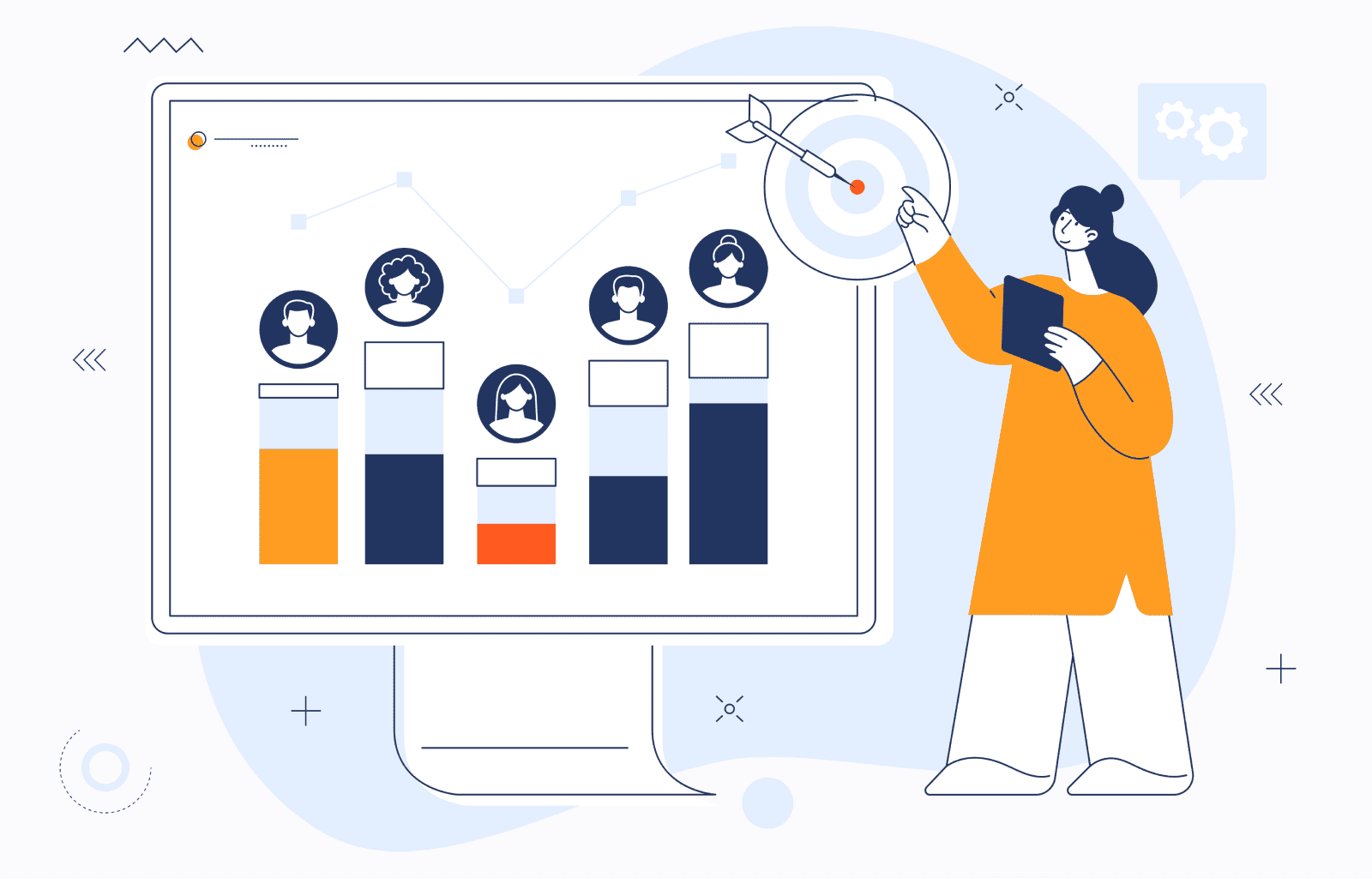APIs, Integrations, and Middleware: The Backbone of B2B SaaS Scaling

Having access to reliable, long-term SaaS products (software-as-a-service) is critical for businesses. These cost-effective and accessible tools are popular because they require limited setup, sync with the cloud, offer flexible payment options, and can grow and adapt as the company changes.
This last part is important. SaaS tools can help companies achieve goals, but only if the software is able to keep up with changing business demands.
What makes B2B SaaS scaling so important is that no company is the same as it was when it started and most likely won’t be the same next year as they are today. Growing and changing is vital, but so is efficiency and remaining on budget.
The bigger your business grows, the more you’ll need to ask from your systems and tools. You’ll have more users and more requests, and you’ll need solutions that can handle your changing needs without having to overhaul everything or frustrate your team with delays.
Scaling correctly means having an application that can handle more users, more data, and more integrations while maintaining stability and functionality. However, it all depends on how well your systems communicate. This is achieved through APIs (Application Programming Interfaces), middleware, and the right integrations.
APIs as the Foundation of Scalable SaaS Communication
APIs enable customization, automation, and integration for SaaS platforms. For instance, they can help your project management or customer relationship management (CRM) tool talk to storage services like Google Drive or communication tools like Microsoft Teams. APIs also connect software to billing tools (so customers can easily take care of payments and payment processing), analytics tools, and many other functions.
These integrations streamline workflow and simplify processes. Users and teams won’t need to jump back and forth in and out of ten different applications to get things done. Plus, less will be missed since your tools interact with one another. No one will need to check five different apps to stay on top of their notifications.
As your company grows, you’ll have additional functions and integrations. APIs keep it all consistent. Plus, it saves you money and reduces the risk of data breaches or other attacks. Coding errors or outdated API frameworks can lead to security risks such as excessive data exposure or cyberattacks.
A strong API isn’t just secure, but it also lets you add new tools, new clients, and new functionality without rewriting code. This is perfect for a growing business.
Core Principles of Scalable API Design
APIs are important, as established, and getting this foundation built correctly helps you expand and grow as needed. There are several things to keep in mind when you’re designing a scalable API, including:
- Version control: ensures safe updates without breaking existing integrations
- Documentation: helps developers and partners integrate faster
- Authentication: secures communication between systems
- Monitoring and testing: lets you catch issues early and make scaling predictable
Properly designed and stable APIs make growth controlled and consistent. By focusing on building a strong foundation for your software, you’ll have a much easier time handling B2B SaaS growth and scaling as needed.
Middleware: The Layer That Keeps Growth Manageable
Middleware connects different applications and services so that they can properly communicate and share data. It essentially acts as a bridge between different tools, technologies, and databases so they can exchange information.
Core Functions of Middleware
Middleware acts as a bridge between different applications, devices, and services while supporting interoperability between software. This lets your applications, data, and systems work together seamlessly and reliably.
Middleware works to:
- Queue data requests or transactions and temporarily store them when a system is busy or offline.
- Transform data into the correct format so it can be understood by different systems.
- Route information between APIs.
- Keep systems independent so that one service can change or scale without disrupting everything.
Middleware keeps systems coordinated and stable as integrations increase. This is crucial for B2B SaaS scaling and growth.
Integration Architecture Models for Scalable SaaS
Architecture defines how systems and external tools connect. By creating a strategic framework to track connections and data flow between systems and applications, you’re better able to build reliable, secure, and scalable solutions that support business goals and deliver strong performance while staying on budget.
Main Connection Models Used in SaaS Systems
Want to know how to scale a SaaS business? It’s all about connections.
- Point-to-point: Direct links between systems. It uses middleware to enable data-sharing. This method works early but becomes hard to maintain later.
- Hub-and-spoke: This doesn’t require a direct connection. Instead, it uses a central hub that manages communication. That makes it easier to monitor and update.
- API gateway/orchestration layer: This is a unified management of authentication, routing, and data flow that combines multiple APIs into a single system. It is most suitable for complex ecosystems.
In a SaaS environment, the right connections matter. Choosing the correct model for your platform and your use case gives you a distinctive edge not just when it comes to creating a competitive product, but when scaling as well.
Common Integration Challenges During Scaling SaaS Products
When developing a SaaS product, scalability is important. Understanding the typical challenges you may face during the process will help you create a SaaS application that thrives long term.
- Data consistency between systems
- High API traffic and performance drops
- Client-specific integrations
- Authentication management
- Detecting and fixing errors quickly
If you don’t plan ahead and prepare for possible challenges, your company can encounter several problems. This includes going over budget if you have to keep going back and changing the work you’ve already done, missing out on opportunities to innovate or find success because it took too long for your product to get to market, leaving vulnerabilities or issues in the product you release to customers, or creating an application that doesn’t meet market needs.
Designing Integrations for Long-Term Growth
When SaaS companies design for growth from the beginning, they have a much easier time scaling and can deliver integrated and reliable products that meet customer needs without needing to go back and start everything from scratch.
This can be achieved by:
- Planning integration structure early
- Keeping consistent data models and documentation
- Using automated testing
- Separating integration logic from product logic
It becomes clear that the answer to “How to scale SaaS products?” is to use a scalable, future-oriented approach when designing integrations. It also means continuing to monitor and support your technology as you grow.
How to Scale SaaS Products for Your Business
Scalability matters and the way you get it done matters even more. Scalable software lets you add or change features (such as integrating different payment tools or accessing detailed analytics) without damaging the rest of the system. When done properly, it keeps the software stable while it improves. You don’t need to rebuild everything or switch to another platform.
Achieving this requires reliable system communication, strong APIs, detailed integrations, and streamlined and effective middleware. Integrio helps SaaS companies build integration ecosystems that get this done. Whether you’re a SaaS startup looking to ensure that your software is ready or any company that wants to know how to scale SaaS products for your business, we’re here for you.
FAQ
SaaS APIs enable communication between a SaaS application and other tools or systems. This lets them share specific data to increase functionality. Users won’t need to switch between different applications or enter data manually multiple times.
The API provides a set of rules for how and when data can be exchanged. For this reason, SaaS APIs often require authentication and authorization.
If you’re asking how to scale B2B SaaS offerings, the answer is that your team should focus on scalability from the beginning. By making scalability a central consideration from day one, you can incorporate it into everything you do. This is much more efficient than going back and having to redo or patch systems that weren’t designed to handle increased demand or additional functionality.
If you don’t plan for scaling right away, you either won’t scale, or you’ll need to do a lot of work to catch up. Neither option is desirable. When you think about scalability from the start, and design a foundation that makes growth possible, you’ll have much more success in the long run.
We have decades of experience in SaaS software development and growth. We help you scale by understanding your business vision and your goals before we do anything else. We’re not just developing software tools, we know that we’re also helping develop your business.
Plus, we don’t just create a tool and leave you to handle it on your own. Our team continues to work with you as you grow, helping you reach higher and achieve more. If you want to know how to scale a SaaS business, get in touch.
Contact us

